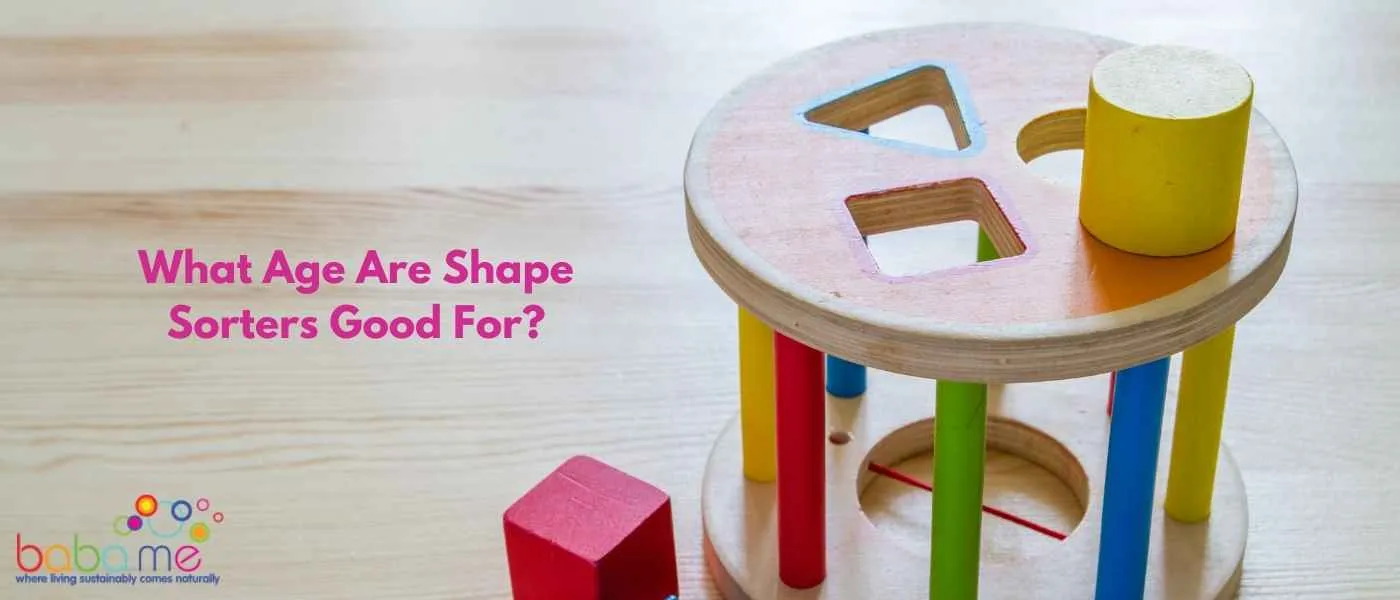Venturing into the developmental milestones of infants and wondering when they typically begin to master the skill of fitting shapes into corresponding holes?
You’re delving into an intriguing aspect of cognitive and motor development with shape sorting toys.
The ability to match shapes with their corresponding holes is not just about physical coordination; it also involves problem-solving and spatial awareness.
Based on developmental norms and my expertise in early childhood development:
Age Range for Beginning Shape Sorting:
- 6-9 months: Babies start to show interest in holding and manipulating objects. At this stage, they might attempt to place objects into containers, though not necessarily with accuracy regarding shapes.
- 9-12 months: Babies begin to refine their hand-eye coordination and may start to understand the concept of fitting objects into specific spaces. You’ll notice them trying to fit larger objects into slots or holes.
- 12-18 months: During this period, many toddlers start to grasp the concept of matching simpler shapes (like circles) with their respective holes in a basic shape sorter.
- 18-24 months: As their spatial awareness and motor skills continue to develop, toddlers begin to accurately match more complex shapes, like squares and triangles, into their corresponding slots. They also start understanding the concept of orientation – realizing that a shape might fit if turned the right way.
It’s worth noting that children develop at their own pace, and the above timeline is a general guideline. If you have concerns about your child’s development, it’s always a good idea to consult with a pediatrician or child development specialist.
Babies have poor muscle control and could potentially fall down and land into hard toy pieces. So what’s the best age for your child to start playing with shape sorters?
Many experts agree that 2 years old is the best age to teach your child shape recognition. However, you can let your child play with a shape sorter as early as 1 year old. At first, you would need to assist her in fitting the pieces into the right holes.
At 18 months, your child begins to fit shapes into the sorter unassisted. And at age 3 onwards, you can time how fast your child can fit the shapes into the sorter. You can set a goal with each attempt to make it more fun.
Shape sorters including shape sorters included in an activity cube help your child to develop a wide range of skills. It helps children develop dexterity and hand-eye coordination when they pick up and manipulate the shape pieces. Playing with shape sorters also involves problem-solving, memory and cause-effect relationships.
There are lots of benefits of shape sorters – see our detailed guide to benefits of shape sorters
When Do Babies Learn to Put Shapes in Holes?
Babies develop skills at different rates, influenced by individual differences, environmental factors, and opportunities for practice. When it comes to the specific skill of putting shapes into corresponding holes (like with a shape sorter toy), most babies start showing this ability between 12 to 18 months. Here’s a general timeline of how this skill typically progresses:
- 6-9 months: At this age, babies become interested in exploring objects, holding them, and examining them. They may bang toys together, put them in their mouths, and drop them to see what happens. They might show interest in the shape sorter toy but will not yet understand how to match the shapes with the correct holes.
- 9-12 months: Babies in this age range often start to understand the concept of “in” and “out.” They might attempt to place objects into containers, although not necessarily the right shapes into the correct holes. They’ll enjoy dumping objects out of containers just as much as, if not more than, putting them in.
- 12-18 months: Most toddlers start to grasp the concept of matching shapes around this age. Initially, they might try to force shapes into the wrong holes, but with practice and repetition, they begin to recognize which shapes fit where. It’s common for them to master placing the simpler shapes first, like circles, before moving on to more complex shapes.
- 18-24 months: By this age, many toddlers can accurately match several, if not all, shapes on a shape sorter toy. Their problem-solving skills and spatial awareness have developed to a point where they can rotate and adjust shapes to fit them into the correct holes.
It’s essential to remember that these are general guidelines, and there’s a wide range of what’s considered “normal” development.
Some babies might show interest and ability earlier or later than the typical range. As always, if parents or caregivers have concerns about their child’s developmental milestones, it’s a good idea to consult with a pediatrician or child development specialist.
Age-appropriate Toys
Children learn through play and playing the same games over and again. Toys should be fun. But they should also be safe, age-appropriate and stimulating – the first benefits of sorters is motor skill development and cause and effect rather than problem solving skills.
As the child develops, then comes the fine motor skills and cognitive development skills – working out the toy shapes and the holes they fit in.
Choosing age-appropriate toys maximises their educational value. Simple toys are better than more complex ones for a younger age group. For instance, a rag doll encourages imaginative play than a doll that talks.
Wooden Toys
Wooden toys should also be at the top of your list. They are made from sustainable materials. Unlike toys made from plastic, wooden toys are safer and better for the environment.
Plastic is non-biodegradable and often contains harmful chemicals. These chemicals are carcinogenic and linked to a wide rage of disabilities and health problems.
In terms of appearance, most plastic toys look cheap. Wooden toys, on the other hand, are more classy and passed on from one generation to the next.
Our Top Picks
One of our best selling toys is Bigjigs Shape Sorting Cube. It comes in a simple cube with holes and corresponding shape pieces. It’s a perfect first toy for you baby.
It has fantastic developmental value and offers hours of fun. It’s made from responsibly sourced wood and finished with water-based paint. You will have a piece of mind knowing that BigJigs toys conform to European and international safety standards.
Another amazing toy from BigJigs is their First Shapes Sorter. It’s simpler than their sorting cube. It comes in a form of a tray and a set of 9 different shape pieces. It’s a wonderful early learning tool in teaching your child her first shapes and colours.
Lastly, if you’re looking for something more complex, we have Tender Leaf Toys Noah’s Shape Sorter Ark. It’s a premium shape sorter that encourages imaginative play and improves visual discrimination. It’s made from highly renewable rubber tree wood and painted with chemical-free dye.
Safety First
Safety should always come first. Before buying any toy, make sure to read its label and warnings. Shape sorters have detachable pieces which can be a choking hazard. Be careful about creating a tripping hazard with strewn toy pieces on the floor.




